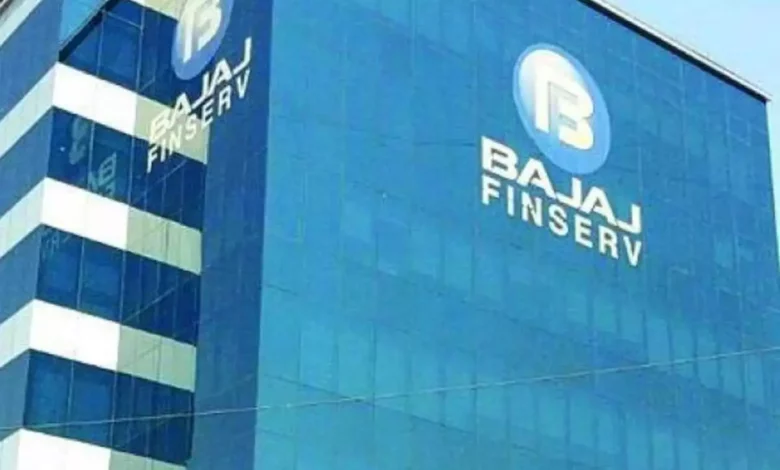Bajaj Finance’s share price surges 5% after the company’s Q1 profit more than doubles; should you buy, hold or sell?

Bajaj Finance’s share price surges 5% after the company’s Q1 profit more than doubles; should you buy, hold or sell?
After the business announced a 155 percent year-over-year increase in overall net profit at Rs 2,533.40 crore from the Apr-June quarter, topping street estimates, Bajaj Finance‘s share price soared 5 percent to Rs 6,739 on NSE. In the comparable quarter the year before, Bajaj Finance reported a profit of Rs. 993.85 crores.
To reach Rs 6,638 crore, the net interest margin (NII) climbed by 48 percent yearly. The business also saw its customer franchise expand by 2.73 million, the most significant quarterly increase ever. Bajaj Auto stock has lost more than 7% of its value so far this year, trailing benchmark Nifty 50. Despite the stock’s high growth trend, analysts have differing opinions.

Should you purchase, hold, or sell shares of Bajaj Finance?
Mr. Oswal Motilal Purchase target: Rs 7,320; potential gain of 14%
Bajaj Finance’s client acquisitions and new loan trajectory have been substantial, say analysts Motilal Oswal, and the momentum will only continue to grow now that the company has a complete digital ecosystem, including an app, a web platform, and full-stack payment options. They anticipate Bajaj Finance will generate a respectable AUM CAGR of 26% from FY22 to FY24.
The ability to spread on the increased cost of funds to a sizable fixed-rate book and the levers on the cost of borrowing has mostly played out, making analysts feel that NIM contraction is probable in FY23, despite the management’s guidance that it will prioritize margins above loan growth.

With a goal price of Rs 7,320, the brokerage confirmed its “buy” recommendation for the company (premised on 7x FY24E BVPS). A prospective entry into the credit card sector using its balance sheet, margin trajectory, velocity on the rich user experience, and progress on the anticipated online platform are some of the key topics to watch out for in FY23 in India.
Kotak Securities: Sell for Rs. 5,400 at fair value.
While the present growth and return matrix are still solid, according to Kotak Securities, the competitive environment and macroeconomic news may not be enough to support Bajaj’s high valuations. A chance to reduce risk exists given the recent stock market surge.
The brokerage cut the stock’s rating to “Sell,” with a fair value (FV) of Rs 5,400. (4.9X book; rolled over to Rs5,100). It warned that any plan to apply for a bank license and any delay in implementing the digital strategy ran the risk of further downgrading. The increased profitability of house loans (a fast-growing industry in FY2024E) and faster growth in rural businesses are sources of upside risk.
Buy from JM Financial

Target price: Rs. 9,000; potential upside: 40%
Bajaj Finance’s Q1FY23 results, according to analysts at JM Financial Services, show overall strength due to its skillful liability management, ongoing customer acquisition momentum, and normalization of credit rates to pre-Covid levels.
“Management voiced confidence that margins would stay at their current level for the next three quarters and that the impact of growing CoF would be moderate. Additionally, management anticipates a drop in CIR beginning in FY24 as operating leverage begins to take effect. RoA and RoE were 4.8 percent and 24.2 percent, respectively, according to the brokerage’s predicted 27 percent AUM CAGR throughout the FY22–24 period.
One of JMFL’s top picks in the banking sector continues to be Bajaj Finance. With a target price of Rs 9,000, it kept its “buy” recommendation on the stock. Customer franchise increased by 20% between June 30, 2021, and June 30, 2022, reaching 60.30 million (6.03 crore) instead of 50.45 million (5.05 crore).
In Q1 FY23, the company’s customer franchise increased by 2.73 million (27.3 lakh), the most significant quarterly increase ever. In Q1, interest income increased 33% to Rs 7,920 crore from Rs 5,954 crore in the same quarter of FY22. In the June quarter, the NBFC increased the number of new loans it had secured by 60%, from 46.3 lakh to 74.2 lakh.
AUM climbed 30% to Rs 2,04,018 crore in the first quarter from Rs 1,59,057 crore in the same period last year.

The Bajaj Group’s NBFC division said its bad loans and contingencies for the quarter dropped to Rs 755 crore from Rs 1,750 crore the previous fiscal year.
Bajaj Finance’s consolidated net profit increased by 159 percent to Rs 2,596 crore in the first quarter of FY23 over the same period in FY22, primarily due to strong AUM growth and more significant net interest income, and more robust asset performance. When compared to the Rs 6,743 crore reported in Q1 FY22, the total revenue for Q1 FY23 jumped by 38 percent to Rs 9,283 crore.
Cash Holdings (AUM) increased by 28 percent year over year (YoY) to Rs 204,018 crore at the end of 2022 from Rs 159,057 crore at the end of 2021. The gross written premium for the first quarter of FY23 at Bajaj Allianz General Insurance Company (BAGIC) increased by 25% to Rs 3,119 crore from Rs 2,494 crore reported in the first quarter of FY22.
In Q1 FY23, the team stated government health insurance for Rs 108 crore. From the reported Rs. 1,815 crores in Q1 FY22 to Rs. 1,852 crores in Q1 FY23, the net earned premium grew by 2%.
From 75.9% in Q1 FY22 to 77.9% in Q1 FY23, the claim ratio increased primarily due to increasing severity (the effect of inflation) in the motor and healthcare segments. As a result of the higher claims ratio, the combined ratio increased from 103.4 percent in Q1 FY22 to 104.6 percent in Q1 FY23.

In Q1 FY23, profit after tax increased by 14% to Rs 411 crore from Rs 362 crore in Q1 FY22.
The liquidity ratio was 349 percent as of June 30, 2022, far above the minimum legal threshold of 150 percent. As of June 30, 2022, cash and investments, or total assets (AUM), totaled Rs 25,362 crore (up 8 percent YoY).
The new business premium for the first quarter of FY23 for Bajaj Allianz Life Insurance (BALIC) more than tripled to Rs 2,917 crore from Rs 1,296 crore. For Q1 FY23, the renewal premium was Rs 1,452 billion (up 19 percent YoY).
From Rs 2,516 crore in Q1 FY22 to Rs 4,369 crore in Q1 FY23, the gross written premium jumped by 74%.In Q1 FY23, shareholders’ profit after tax increased by 48 percent to Rs 124 crore from Rs 84 crore in Q1 FY22.
As of June 30, 2022, the solvency ratio was a healthy 527 percent, exceeding the minimal statutory threshold of 150 percent. Assets Under Management (AUM), the sum of all investments, went from Rs 77,270 crore on June 30, 2021, to Rs 83,072 crore on June 30, 2022, a rise of 8%.
Edited by Prakriti Arora




